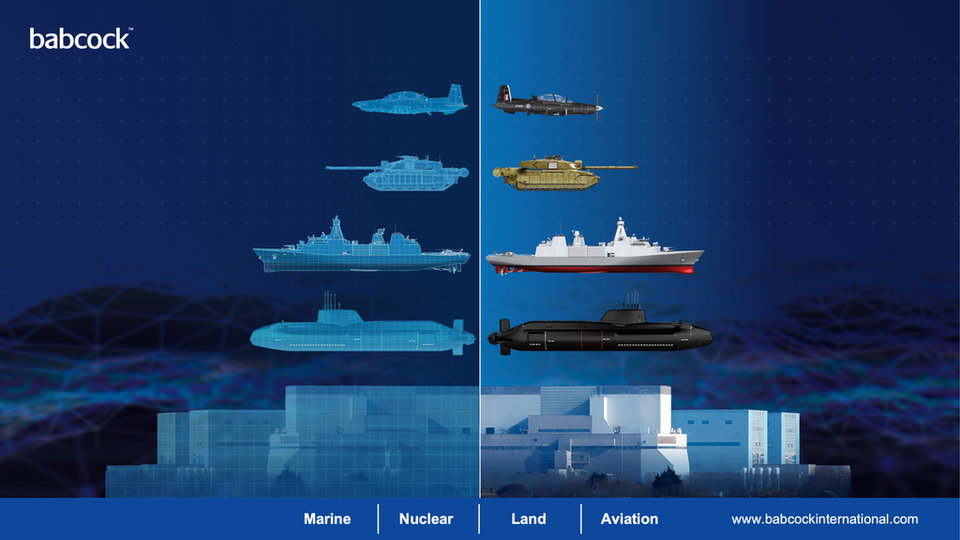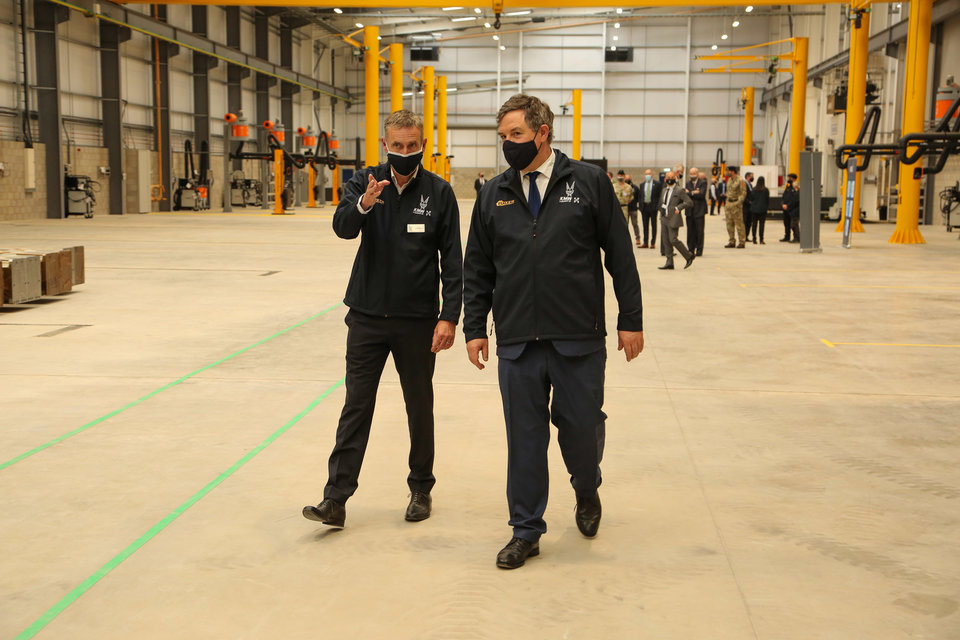Submarines
Naval digital monitoring
Preparedness and planning are key to naval success, but even the best-laid plans can come crashing down. When mechanical assets fail, so too can a mission, often at great cost. Andrew Tunnicliffe finds out why digital asset oversight begins not at sea but at the manufacturing plant.
Australia's sovereign-owned submarine sustainment and maritime services company, ASC, announced plans to embark on a digital transformation programme in March this year. The company constructed and sustains the Royal Australian Navy’s six Collins Class submarines, provides training to its submariners and is now developing the first and second Arafura Class offshore patrol vessels.
“This project will keep ASC at the cutting-edge of submarine sustainment innovation. It will ensure we maintain an efficient, cost-conscious culture as we continue to deliver world-class service and value for money to the Royal Australian Navy,” said ASC CEO and managing director Stuart Whiley at the time.
The company said that the programme ‘will set the ground for ASC’s digital shipyard transition facilitating more streamlined processes, enhanced integration between systems and the expanded use of real-time data to drive optimised decision-making across the organisation’.
Naval digital transformation is increasingly important from a supply and operational perspective.
“The future performance in war will be dominated by the relentless and competitive exploitation of data: undersea, on the sea, in the air and in space,” said then head of the UK Royal Navy First Sea Lord George Zambellas in 2016. The following year heralded the birth of Project NELSON, tasked with delivering digital transformation to the navy.

// iSupport 360 is Babcock’s digital asset maintenance and engineering product. Credit: Babcock International
Project NELSON
Project NELSON aims to make the Royal Navy’s data coherent and accessible, enable the rapid development and deployment of intelligent applications and grow a culture of digital delivery. NELSON standards cut down the work of designers by using some standardised technologies and code. This also means the end user is familiar with systems regardless of their developer or function.
Digital transformation is no longer just a technology trend for A&D organisations
“In recent years, military organisations and defence in-service support providers have moved to a new performance-based logistics model to enhance military asset procurement, sustainment and support,” says Matt Medley, industry director for aerospace and defence (A&D) manufacturing at enterprise software provider IFS.
“Digital transformation is no longer just a technology trend for A&D organisations. It’s a core business approach that needs to be at the heart of enterprise strategies, being both driven and enabled by cloud computing, predictive analytics, machine learning and the Internet of Things.”
Although a lot of progress has been made in the digital sphere, both at a supplier and customer level, Medley says there is more to do. He says in order to build a digital transformation programme, A&D organisations need a digital overhaul. They need an enterprise breadth system that can do more than simply manage essential maintenance, repair and operations or supply chain processes, and optimise scarce resources and assets in isolation.
“They will need a software system that’s agile enough to act on the increasing data volume and complexity to deliver quantifiable operational benefits,” he adds.
There is also room for improvement when it comes to force-wide asset mobilisation; commanders require a real-time view of their available assets. Medley says during a recent military and defence event IFS polled attendees on the greatest challenge to operational agility.
“The largest single grouping of responses – 40% – highlighted an inaccurate picture of asset readiness, followed by 27.5% of attendees who identified the use of disparate reporting and siloed information,” he says.
Total asset readiness
Like the UK and countless other defence forces around the world, the Australian Defence Force is enhancing its military support operations. The programme will deliver a connected, unified service that supports the operation of a modern military. At its core is an upgrade to a next-level Enterprise Resource Planning (ERP) solution.
“The importance of ERP is clearly recognised by key military and defence players,” says Medley. “Responding to the IFS total asset readiness webinar questions, over a third felt their current ERP solution is an impediment to experiencing a clear real-time view of military assets and their level of readiness.”
He says that to achieve the level of insight required for total asset readiness, organisations require an integrated enterprise software system that replaces previously siloed legacy systems and provides a real-time window into asset status at any given moment.
“Only then will military operators and defence in-service support providers have the tools to jointly deliver the maximum state of readiness, operational efficiency and picture of preparedness,” he adds.
Babcock International is another company providing solutions that replace disparate software applications and supporting processes with single user-friendly and familiar platforms, enhancing operational efficiency in mission-critical areas.
“The scale, reach and impact of the work we are doing at Babcock is to create a future-ready, world-class defence capability for our customers,” says Babcock Warships engineering director Ian Cowper.
“Digital technology is changing the way we work and what we can deliver through combining cutting-edge technology with our engineering insight to support our customers’ critical and complex assets.”
iSupport 360 – holistic asset insight
Babcock is providing the UK Royal Navy with artificial intelligence, virtual reality, robotics, digital twins and autonomous surveys technologies. It is supporting a wide number of digitally enabled asset management programmes, including the Type 31 design and build programme and the Type 23 frigate life extension, which sees the transformation of the ships into digital platforms through some of the largest capability upgrades and enhancements since their build.
“Digital technology is already one of the key elements in the future of defence support, but the integration of those technologies to provide a complete package will give us the real insight we need to assure availability and sustainment of critical equipment whilst reducing the cost of ownership to the taxpayer, encompassed in our iSupport360 offering,” adds Cowper.
“The digital trend has been an evolution to a holistic view of an asset’s data throughout its entire lifecycle.”
Digital technologies are increasingly at the heart of everything we do
Cowper urges defence partners not to focus heavily on one technology. For example, digital twins play a growing role, offering greater availability, reliability and sustainability of assets making them an essential requirement of future equipment procurement programmes. However, most of the equipment be used by the military over the next 10–20 years is already in service, with expected lifetimes to 2050 and beyond.
“Digital technologies are increasingly at the heart of everything we do,” Cowper says.
He adds that to be successful, digitisation requires the engagement of stakeholders from across defence and industry and partners must act positively on findings of any digitisation programme. This includes how the equipment is manufactured, how it is supported or how it is used.
“This requires new levels of openness, transparency and collaboration,” Cowper adds.
Medley shares that sentiment, saying: “A good digital transformation programme means putting in place a fully integrated data environment to ensure barriers to executing a digital transformation project are removed, requiring close collaboration from military organisations, industry players and software providers.”
As the digital transformation continues, one thing is certain, says Cowper: “From warships to nuclear power stations, digital transformation delivers the added readiness, availability performance, efficiency and value that is in such demand.”

// UK Minister for Defence Procurement Jeremy Quin (R) touring new WFEL Boxer Hall during Official Opening Event. Credit: WFEL
// Main image: Lockheed Martin’s MORFIUS is a high-powered microwave-based interceptor drone. Credit: Lockheed Martin